I would like you to forget every part you already know about chest training. You simply need three exercises to get monster pecs – a flat press, an incline press, and a fly variation. The particular exercises have some wiggle room, but three stand out above the remainder.
This text covers my favorite chest exercises: the flat barbell bench press, incline dumbbell press, and cable crossover. If you happen to think you may’t get jacked with only three chest exercises, this text is for you. An excessive amount of exercise variation has likely been holding you back. Progressing on these three movements is the important thing to growth. So, should you are ready to alter the way you train your chest, let’s dive in.
1. The Flat Barbell Bench Press
As popular because the barbell bench press is, it’s clouded in controversy within the bodybuilding community. Some say it’s the perfect chest builder, while others claim it’s just an injury waiting to occur.
Early in my training profession, I listened to the latter crowd. As a substitute of barbell benching, my chest training was all dumbbells, cables, and machines. These implements are great, but they shouldn’t replace the barbell. Sarcastically, my chest didn’t begin growing until I began powerlifting. My chest exploded as soon as I threw away all the bodybuilding dogma and focused on barbell benching.
Now, it wasn’t just the bench press. It’s how I attacked it. Here’s a bench press tip you don’t hear a number of bodybuilders provide – go heavy for low reps. Yes, use the barbell bench press the way in which the massive boys do. Research shows that you may construct muscle even with low reps, so do not be afraid to place some weight on the bar.¹ I would like you to bully the weights and concentrate on hitting recent personal records within the 3-6 rep range.
Lifting progressively heavier weights over time is the important thing. Keep track of your training in a notebook. Write down the load, sets, and reps. Each time you go to bench press, try so as to add an extra rep or an extra 5 kilos to the bar.
Barbell Bench Press Tip: Technique
Learning methods to bench press properly will keep you healthy and permit you to get probably the most out of the exercise. The largest thing is tension. We would like every part out of your feet to your head to be tight.
In the course of the set-up, dig your traps and upper back into the bench while squeezing your shoulder blades together. If done right, this offers you an arch. It doesn’t must be a crazy powerlifting arch, but an arch is sweet. It puts your shoulders in a safer position to press and mimics a decline angle without the awkwardness of a decline bench. See, we are going to still sneak some lower pec work in in any case.
2. The Incline Dumbbell Press
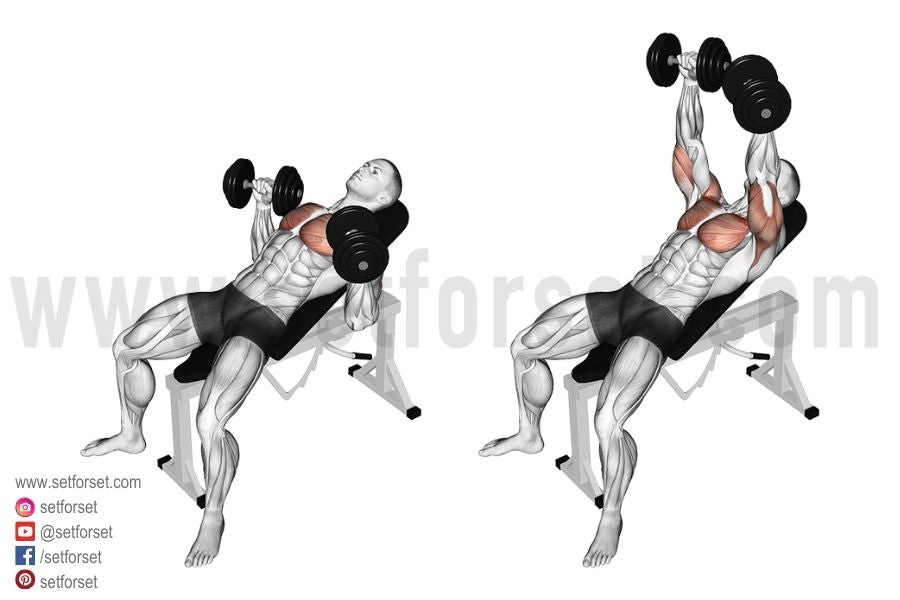
The second exercise is the incline dumbbell press. Barbells are great, but including a dumbbell chest exercise after the flat barbell bench press is smart. Dumbbells allow for unilateral training, meaning each limb works independently, helping to deal with muscle imbalances and asymmetries. Plus, I’m not too keen on the incline barbell press, mainly since it’s hard to securely get the bar off the rack. It at all times seems like I’ll tear my shoulder off just getting the bar into position. So, nine times out of ten, I go for dumbbells.
The angle is crucial within the incline bench. Research shows you simply need a 30-degree angle to maximise upper chest development as displayed by the EMG graph below.² Thirty degrees is lower than you’re thinking that.
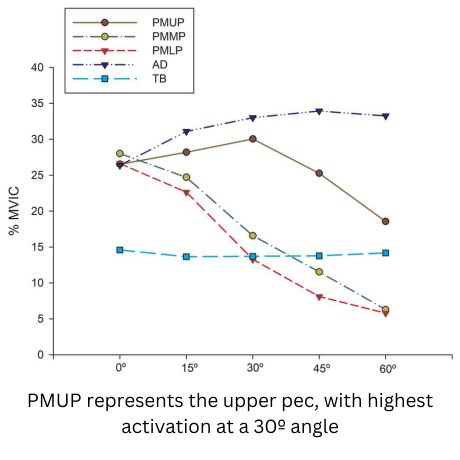
Typically, people use 45 degrees or higher. The issue with that is that it brings the front delts more into play, taking among the tension off the pecs. In case your gym has no adjustable bench that goes to 30 degrees, take a free-standing flat bench and put two 45-pound bumper plates under one side.
Some evidence suggests the upper chest is activated more with a narrow grip.³ With dumbbells, this translates to keeping your elbows tight versus flared out. This detail is not an enormous deal, so do whatever feels best. That said, keeping your elbows semi-tucked is usually more comfortable in your shoulders.
A fast note on technique. Many individuals use an excessive amount of of an arch on an incline press. You must still retract your shoulders and get yourself in a very good position to press, but should you arch an excessive amount of, it almost turns the incline press right into a flat press, defeating the aim.
Incline Dumbbell Press Tip: No Ego Lifting
The barbell bench press is usually called the final word ego lift, but in my experience, the incline dumbbell press is just as bad. I would like you to push yourself to maneuver around heavy dumbbells, but not on the expense of fine technique. Use a weight you may control, especially when lowering the dumbbells.
One other advantage dumbbells have over barbells is that you may use a greater range of motion. The issue is simply a number of people use it. Get a very good stretch at the underside and press until your arms lock out at the highest. Yes, you may must lower the load a bit, nevertheless it’s value it if it results in fuller pecs.
3. The Cable Crossover
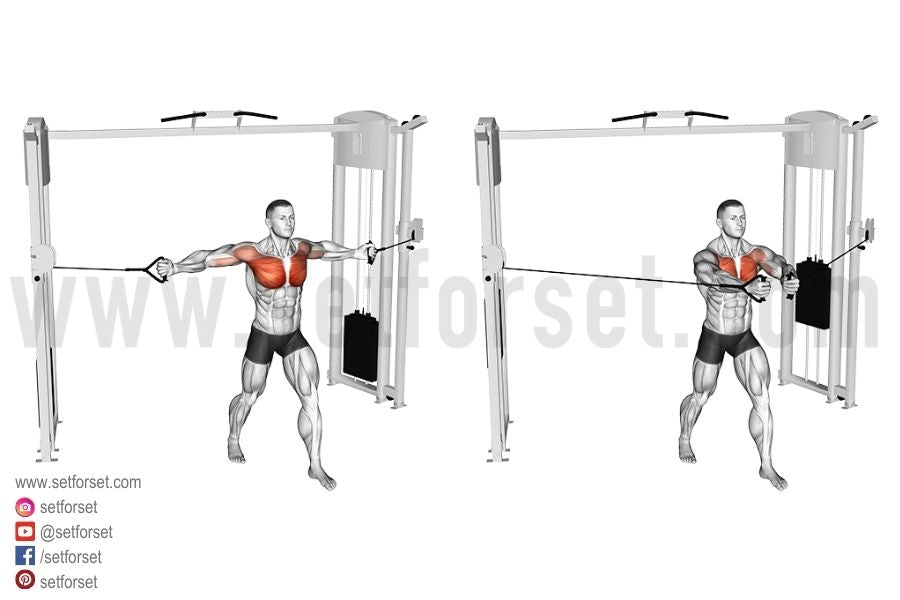
Last but not least is the cable crossover, also often called the cable fly. The primary query is, why include a fly? I really like pressing movements, which is why the primary two exercises are presses. That said, flies offer a safer way to emphasise the stretched position. Furthermore, flies permit you to get a full contraction at the highest. Anyone who has taken a set of cable crossovers near failure knows what I’m talking about. The chest pump is real.
The subsequent query is, why a cable fly versus the countless other options?
The cable crossover is a superb exercise for fuller pecs since it provides constant tension on the pecs for the complete range of motion, maximizing muscle fiber recruitment and promoting hypertrophy. Compare this to a dumbbell fly that only provides tension at the underside and is a simple decision. That is clearly on display within the chart below.
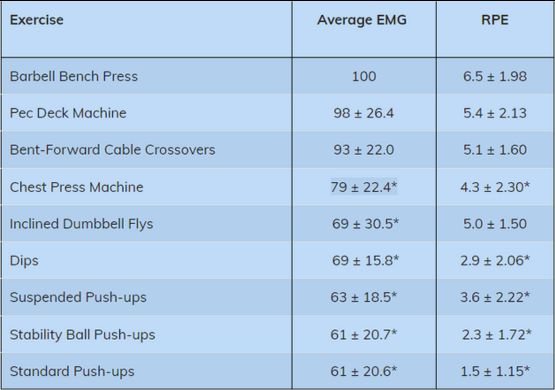
Now, it’s possible you’ll take a look at the chart and wonder why I didn’t select the pec deck. Unlike a pec deck, which is fixed in a single plane of movement, you may play with the cable adjustments up and down for variation or to search out the perfect position in your pecs. This wide selection of movement angles helps stimulate growth across the whole pectoral region for more complete development.
My favorite cable crossover position is the high to low. To do that, set the cables to the very best or near the very best setting, with D-handles attached. The movement begins along with your hands at shoulder height and ends with them around waist height.
Cable Crossover Tip: Focus On The Stretch
An increasing body of research indicates that resistance training at long muscle lengths (the stretched position) enhances muscular growth.⁵ ⁶ ⁷ When doing cable crossovers, concentrate on stretching the pecs as much as you may. Keep your arms barely bent, and produce your elbows back so far as your mobility and suppleness allow. Here’s a bonus tip. Cross your hands at the tip of the movement to get a gnarly contraction. Remember to alternate which hand goes in front of the opposite on every other rep.
Chest Anatomy 101
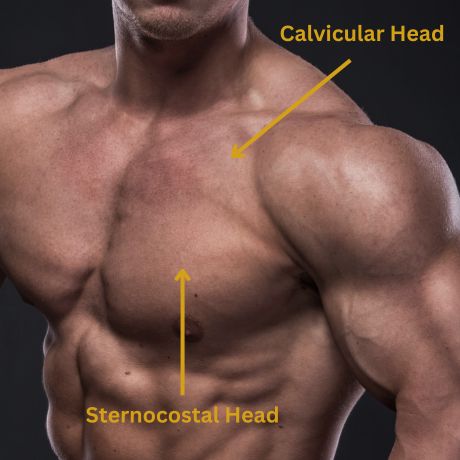
Before we get into the exercises, we want to debate chest anatomy. It’s essential to know because simply changing the angle or grip of a movement can change the impact in your chest development.
The pectorals (pecs), comprised mainly of the pec major and minor, are the first chest muscles. The larger of the 2, the pec major, controls the upper arm’s internal rotation, flexion, and adduction. It has two heads: the sternocostal head, which starts on the breastbone and upper ribs, and the clavicular head, which begins on the collarbone.
Research shows the perfect strategy to goal the sternocostal head is to make use of a flat press, and the perfect strategy to goal the clavicular head is with an incline press, as you may see below.⁸ ⁹


This point is critical since it shows you should incorporate multiple pressing angles to maximise chest development. I really like the bench press, but only flat benching is a standard mistake people make. To construct a full chest, you should also incorporate something for the upper pecs.
Beneath the pectoralis major is the smaller, triangular-shaped pectoralis minor. It enters the scapula after emerging from the third, fourth, and fifth ribs. The pectoralis minor is crucial in shoulder depression and essential for bench press strength and stabilization of the shoulder blade. That said, we will avoid listening to it for greater pecs.
The Decline Bench Press Is a Waste of Time
Do we want to incorporate a decline press, too? The short answer is no. For a transient period, the decline bench got a number of love. Much of it stemmed from a 1997 EMG study that showed the decline bench press caused more muscle activation for the sternocostal head and the identical muscle activation within the clavicular head as an incline bench press.¹⁰
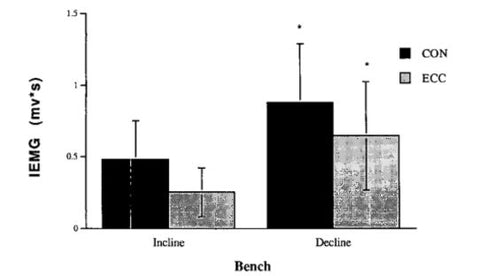
Based on that, the decline bench is the right chest exercise. Not so fast.
An entire dissection of EMG studies is beyond the scope of the article, but their application is restricted. More importantly, research doesn’t consistently show equal muscle activation within the upper chest between the decline and incline bench press—quite the other, as most research shows what bodybuilders have known for a long time. The incline press is the perfect option for the upper pecs.¹¹

So, what’s the deal? The decline bench is fantastic for targeting the sternocostal head of the pecs. The issue is that so is the flat bench press. And when comparing the decline to a flat bench press, the flat bench wins.
For one, most gyms don’t also have a decline bench press. You possibly can’t do it in the event that they haven’t got it. In gyms with one, the bench has your feet elevated or strapped in to forestall you from sliding down the bench. It’s not easy to be stable along with your feet off the bottom.
Stability is critical since it permits you to handle more weight and overload the muscle more effectively. Speaking of more weight, lifting heavier is one reason people just like the decline press. Nevertheless, while it’s true you may lift more weight on a decline, it’s resulting from a reduced range of motion (ROM). Research consistently shows training with a full ROM is best for muscle growth.¹²
The Perfect Chest Workouts For Fuller Pecs
Exercise order matters when putting together the right chest routine for fuller pecs. If doing all three exercises in a single workout, I prefer hitting the barbell bench press first when fresh to maximise performance, and I prefer to wind up with a cable fly. This order leaves the dumbbell incline press sandwiched in the center.
Nevertheless, starting with an incline press may very well be best in case your upper chest is weak. Even then, the sternocostal head makes up many of the chest mass, so I still recommend starting with a flat press.
Listed below are two chest workout examples based on one or two weekly chest sessions.
Option 1: Training Chest Once a Week
- Barbell Bench Press: 5 sets x 3-6 reps
- Incline Dumbbell Press: 4 sets x 6-10 reps
- Cable Crossover: 3 sets x 10-15 reps
Option 2: Training Chest Twice a Week
Workout 1
- Barbell Bench Press: 3 sets x 3-6 reps
- Incline Dumbbell Press: 3 sets x 6-10 reps
Workout 2
- Barbell Bench Press: 3 sets x 7-10 reps
- Cable Crossover: 3 sets x 10-15 reps
The Bottom Line
The TLDR version is that this: You simply need three exercises to coach your chest effectively. The exercises are a barbell flat bench press, an incline dumbbell press, and a cable crossover. With that said, exercise selection is simply a part of the battle. You have to still use good form, utilize progressive overload, and be consistent along with your training. If you happen to try this, you can be well in your strategy to a much bigger, fuller chest.
Are you on the lookout for a recent workout program to begin? We created what we consider the final word hypertrophy program to take your physique to the following level.
References:






